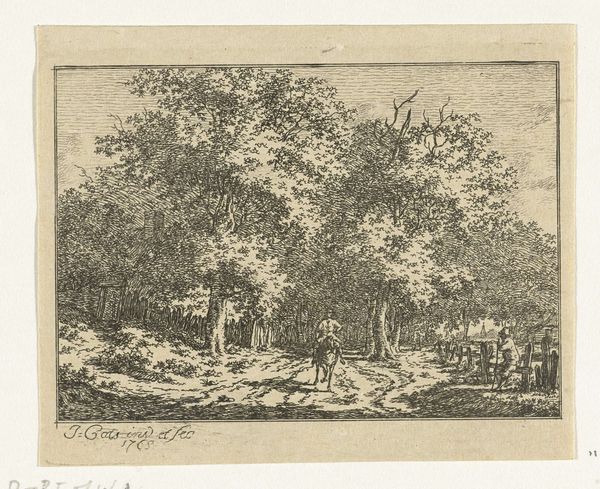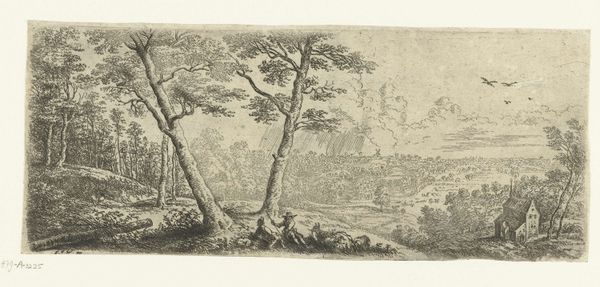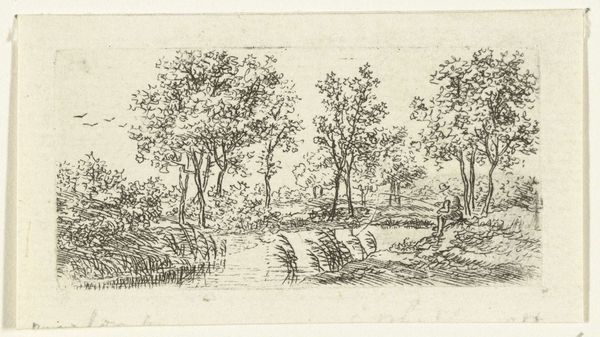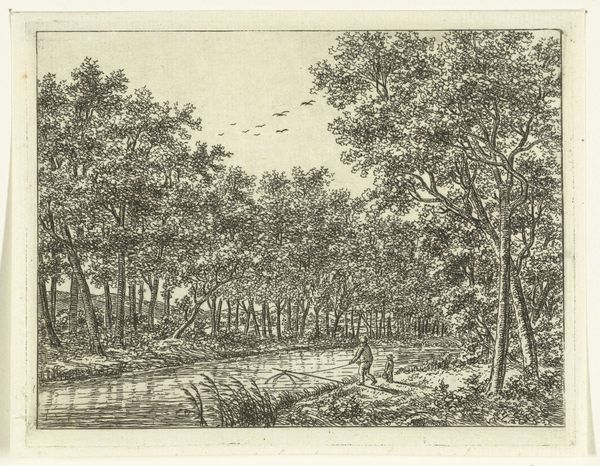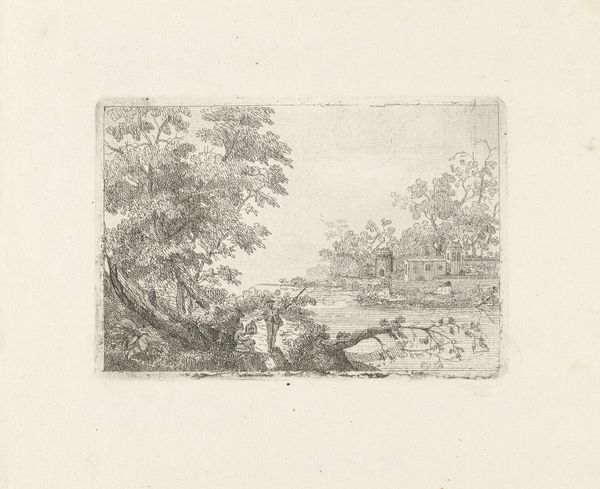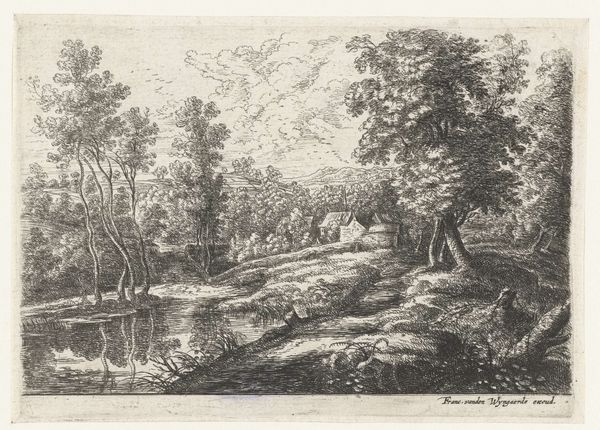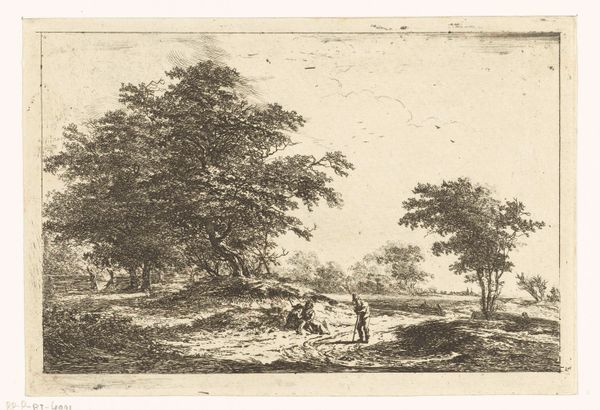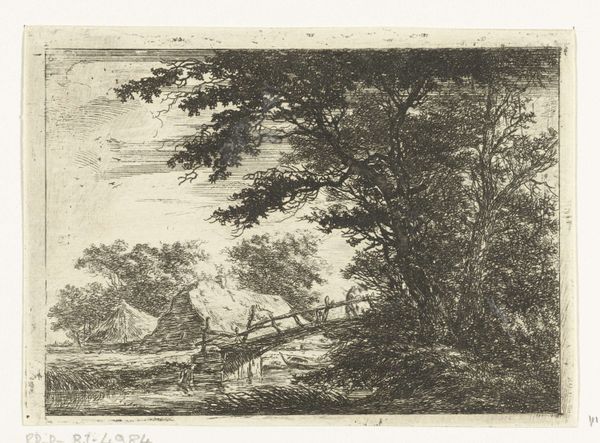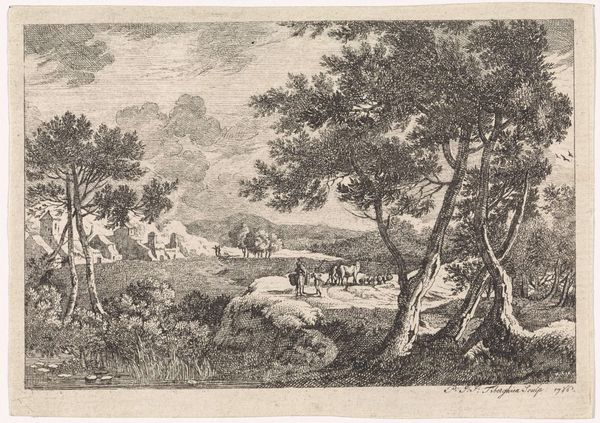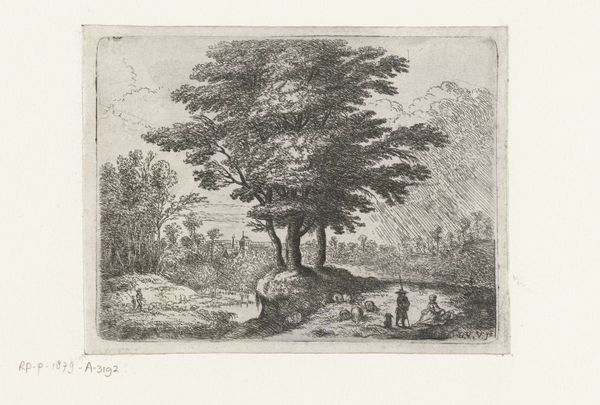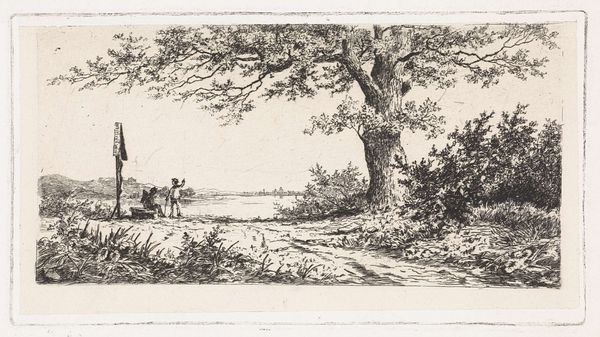
etching
#
baroque
#
etching
#
landscape
#
river
#
etching
#
line
#
realism
Dimensions: height 68 mm, width 92 mm
Copyright: Rijks Museum: Open Domain
Curator: Let’s turn our attention to "Landscape with a Village and Two Men," an etching dating back to around 1662 by Jan Carel Immneraet. Editor: It has a beautifully serene quality, doesn't it? The lines are so delicate, giving the impression of light reflecting off the water. A calming composition, despite its rather mundane subject matter. Curator: Mundane, perhaps, but let's consider the material realities embedded in that supposed "mundanity." It’s an etching. This isn’t some grand oil painting destined for a noble's collection. Etchings like these were relatively accessible, existing in the burgeoning print market of the 17th century. Think of the labor, the specialized skills needed to produce these for wider consumption. Editor: That's fascinating, considering how this etching speaks to something deeper. The two men along the riverbank evoke ideas of the everyman finding solace in nature. River is always loaded, a symbol of journey, change, or transition. Curator: I see your point, but let's also not forget the economics of the Dutch landscape. Land was capital. Visualizing and circulating images of it also had an economic function. These men working, are they owners or merely laborers, dependent on the landscape for their livelihoods? That's the question that keeps me up at night. Editor: True, the socioeconomic realities are undoubtedly at play. The village architecture, with its humble dwellings, suggests a certain social stratification. But the symbolism doesn't always directly correlate with the concrete. Take the tree on the left: it seems to embrace the village, a nurturing spirit watching over it. It suggests roots and collective memory that underpins their day to day reality, as challenging as it is. Curator: The artist skillfully used linear techniques to mimic various textures. It also shows the relative access and increasing affordability for lower- and middle-class customers to invest in art ownership. Etchings offered an avenue for them to consume images that aligned with their developing sense of bourgeois identity and aesthetics. Editor: I suppose what speaks to me the most is the persistence of the landscape. These homes stand quietly by the river. These two characters travel by a body of water, all represented through careful linework. All suggest something universal about the human condition. The piece serves as a gentle echo resonating throughout centuries of our collective conscious. Curator: So while the materials reflect broader socioeconomic trends, they serve as conduits through which these other artistic dialogues, like what you mentioned, also occur. That gives me another way of appreciating the artwork. Editor: Agreed, focusing on both its form and historical impact, this piece gives you more to consider.
Comments
No comments
Be the first to comment and join the conversation on the ultimate creative platform.
